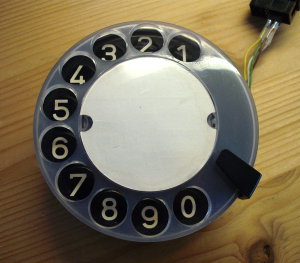My playground :)
My playground :)
(Click the images to enlarge)
Overview
The place where I do stuff.
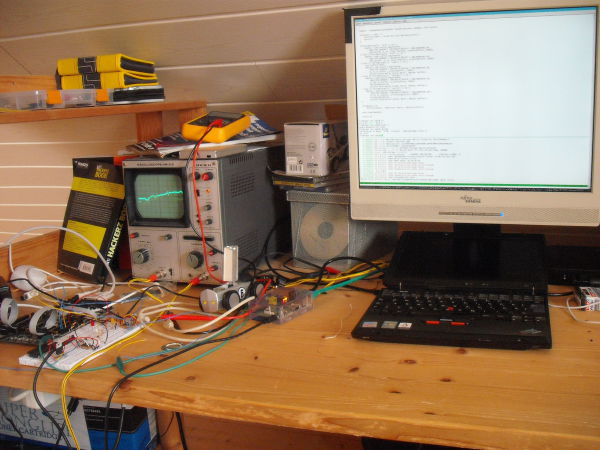
These are the playground toys which I own or owned:
AVR and the STK500
This is my Atmel STK500 board: It has several sockets for most of the 16bit AVR microcontroller types; it features a programmer, a serial interface, 8 LEDs and 8 push buttons, all of those can be connected to the AVR at your will. It also supports high-voltage-programming for rescuing AVRs with borked fuse bits.
Next to it, there's a breadboard and lots of wiring; I was doing some V-USB experiments when I took this photo ;).
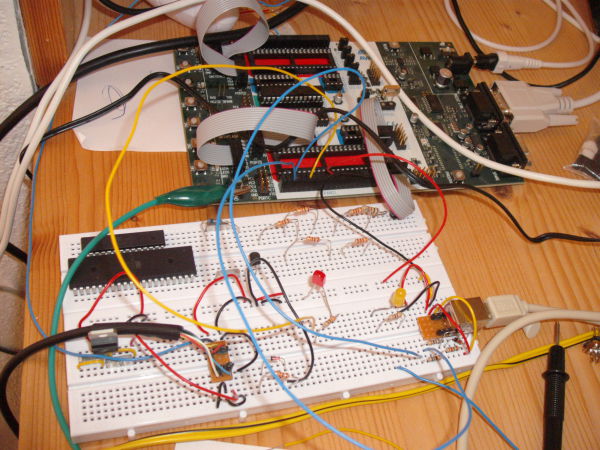
Raspberry Pi
My RasPi offers a full-featured Linux system with access to a decent number of GPIO (general purpose I/O) pins; it currently serves as general experimenation platform, and as "dummy victim" for my USB-in-software experiments with AVRs (since a mistake could destroy a USB port, and I'd rather destroy a 25 dollar thing than my laptop :)
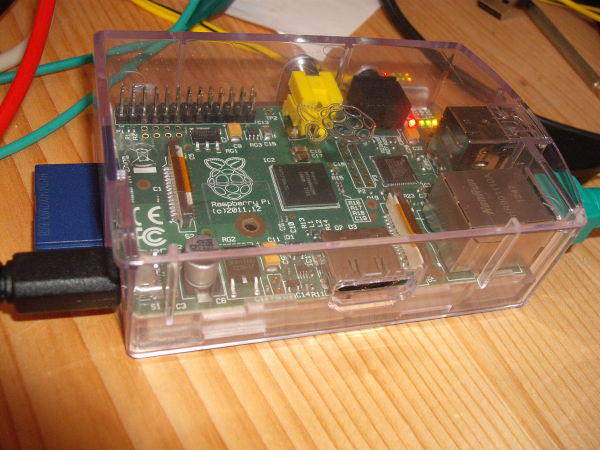
IBM ThinkPad X31
My dear and beloved ThinkPad X31. I bought it in 2010 as a "netbook", and I'm really content with it: It offers comparable performance to a comparable price, but it's an IBM!
It's my everyday laptop, and I'm usually carrying it in my backpack to almost every place where I could use a computer; I really don't treat it very nicely, and it has still no mechanical or electrical defects (except a worn out battery which has been replaced, but hey, it's 11 years old).
In the overview photo one can see the laptop shoved beneath a 1600x1200 monitor, which actually cannot be driven by the ThinkPad at all; with some VGA modeline magic, and 16bit colors, however, it can output a totally stable picture :).
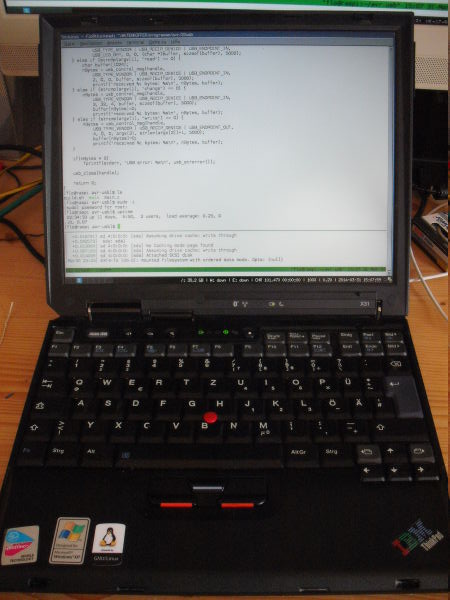
Hameg HM 312 oscilloscope
I also have a pretty ancient HM-312 oscilloscope (ancient as in: electron tube :)), which still does its job fine. While one cannot dig into full-speed USB with it, it's great for viewing GameCube controller communication or debugging AVR circuits.
HP 200LX
I also owned a HP 200LX, which is one of the first (maybe even the first?) PDAs available with a common operating system: MS-DOS 5.0. It is driven by a Intel 286 CPU clocked at 8MHz, and offers 2MB of RAM; however, the computer had neither a harddisk nor a flash, so the RAM was split into the main memory part, and in the disk storage part. Yes, drive C: was actually an area in the volatile RAM, only held alive by a small battery.
Luckily, the 200LX also has a PCMCIA slot where you can put a memory card into (I put a 256MB CF card plus adapter there), which makes this thing really usable!
It not only served me as tiny companion I could take everywhere, but also -- since it ran DOS -- could execute QuickBASIC and also a TurboC IDE; it even ran a C++ compiler, though this one was painfully slow and rather unusable. With its (zoomable) 320x200 CGA-compatible four-grayscales-graphics, it offers anything for decent QuickBASIC programming :).
"Can you even properly type on such a tiny device", you may ask, possibly having already had bad times with today's smartphone keyboards. Yes, you can! The 200LX has a hardware chiclet keyboard which is great to use; you don't need a table to put it on, you can also hold it with both hands and only type with both thumbs, and that pretty fast.



